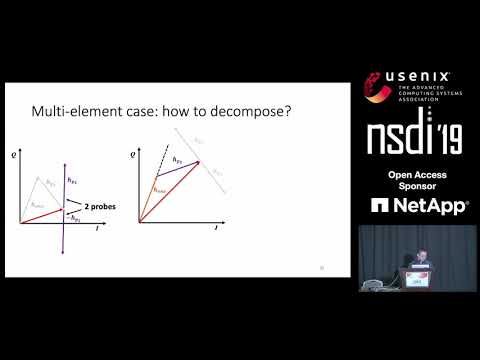Description:
Explore a groundbreaking approach to wireless network design in this 23-minute conference talk from NSDI '19. Discover how instrumenting the environment with a Large Array of Inexpensive Antennas (LAIA) can reconfigure wireless channels in real-time, challenging conventional endpoint optimization methods. Learn about the innovative channel decomposition algorithm that estimates environmental wireless channels and aligns array element phases. Examine the system's ability to optimize channels for single- and multi-antenna links, as well as adjacent frequency band networks. Delve into the results of a 36-element passive array deployment in a real indoor home environment, showcasing significant improvements in TCP throughput and Shannon capacity for both single- and multi-antenna links. Gain insights into the challenges, implementation, and potential impact of this novel approach on the future of wireless communication.

Towards Programming the Radio Environment with Large Arrays of Inexpensive Antennas
Add to list
#Conference Talks
#USENIX Symposium on Networked Systems Design and Implementation (NSDI)
#Computer Science
#Algorithm Design
#Computer Networking
#Network Design
#Engineering
#Electrical Engineering
#Telecommunications
#Wireless Communications